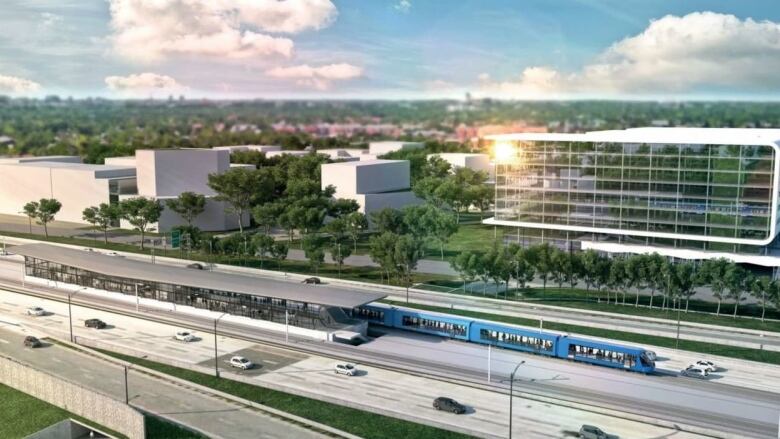It's still unclear how much clients will pay to use Montreal's light-rail system
Details on integration with other transit networks, possibility of sale to government also revealed

Although construction of Montreal's new light-rail systemstarted earlier this month, it's still not clear how much people will have to pay to usethe public transit system.
That was among the findings inside a 202-page document made public today detailing theagreement betweenthe Caissededptet placement duQubecsubsidiary responsible for the project, the regional transit authority and the provincial government.
The agreement was released following concerns about the transparency of the project.
DanielBergeron, chief planning officer for the regional transit authority, known as ARTM, saidhe's confident the price will be similar to what people currently pay in public transit fares.
He said the ARTMwants to integrate and simplify the fare structure in the city.
"The challenge we have in Montreal, there's too many fares," he told Homerun'sSue Smith.
The potential revenues per passengerfor the Caisse are more clear.
According to the agreement, CPDQ Infra, the pension fund's subsidiary responsible for the project,will charge the transit authority72 cents per passenger kilometre, a unit of measurement that representsa passenger being carried one kilometre.
Advanced sale to government
A clause in the agreementgives the Quebec government first dibs on purchasing the network as a whole from CPDQ Infra, which has the right to sell in five years.
It will also be possible for CPDQ Infra to sell a sectionof the REM, as the light-rail network is known,by giving the provincial government six month'snotice.
The province would have the right of first offer to buy it in that instance as well.
Macky Tall,CPDQInfra's senior vice-president,told reportersthe chances were almost nil for his organization to act on this.
Integration with other transport networks
The agreement states that itaims to integrate the REMinto existing public transit systems, including bus, Metro and commuter rail lines.
Citizens across Montreal have expressed concern that existing stations will close or be displaced, causing an increase in traffic.
On Homerun,Bergeronsaid that the stations on the Deux-Montagnesline will be used for the REM,but that some bus terminals will need to be moved closer to new REM stations once they're built.
"We want to have less cars on the island, not more," Bergeron said.
Bergeron saidthe construction schedule will be released in the coming days.
The REM will connect 26 stations covering 67 kilometres fromDeux-MontagnestoBrossard, including stations onthe Island of Montreal.
With files from Antoni Nerestant and La Presse Canadienne












_(720p).jpg)


 OFFICIAL HD MUSIC VIDEO.jpg)
.jpg)



























































































